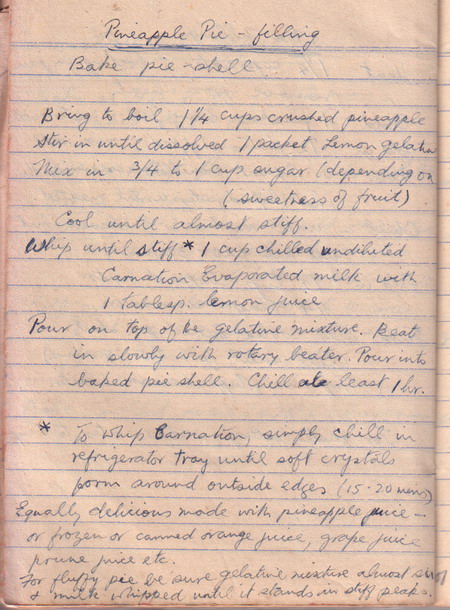Here’s another ice cream recipe, and one that is quite different from the earlier recipe for Perfect Vanilla Ice Cream. This one has no cream or eggs but uses gelatine (read more about how it is produced from animal parts here) and custard powder (which I’ve commented on here).
It also calls for the use of an ice cream churner. I wonder how many Singaporean families in the 1950s had one of those? Unlike the modern electric ice cream makers, traditional ice cream churners would most likely have been like this one. As Wikipedia explains,
These machines usually comprise an outer bowl and a smaller inner bowl with a hand-cranked mechanism which turns a paddle, sometimes called a dasher, to stir the mixture. The outer bowl is filled with a freezing mixture of salt and ice: the addition of salt to the ice causes freezing-point depression; as the salt melts the ice, its heat of fusion allows it to absorb heat from the ice cream mixture, freezing the ice cream.
The churners available in Singapore were quite possibly very similar to the ones available in India. The Tribune from Chandigarh tells us that
In India, ice cream was initially made at home from pure buffalo milk. By the turn of the 18th Century, an ice cream machine was developed for home use. You can still buy the stuff. It’s a wooden bucket with a central aluminum jar and a churner. For preparing ice cream in the machine, you have to put milk, essence and sugar in the jar. This container is then placed in the bucket full of ice and a little salt. After churning for about 45 minutes, the ice cream is ready. Though not as smooth as the one available in the market, it is delicious.
Like the Indian news article, grandma’s recipe calls for the addition of ‘flavouring essence’. Indeed, a Google search of ‘flavouring essence’ throws up mostly manufacturers in India. The flavours could be lemon, strawberry, mango, almond etc. A visit to a specialist baking supplies store should provide you with these items.

